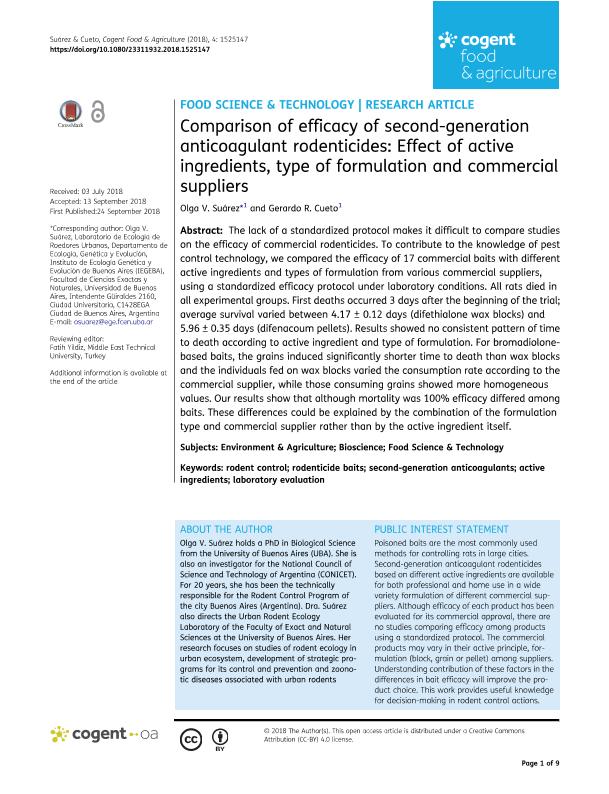Artículo
Comparison of efficacy of second-generation anticoagulant rodenticides: Effect of active ingredients, type of formulation and commercial suppliers
Fecha de publicación:
16/10/2018
Editorial:
Taylor & Francis
Revista:
Cogent Food & Agriculture
ISSN:
2331-1932
Idioma:
Inglés
Tipo de recurso:
Artículo publicado
Clasificación temática:
Resumen
The lack of a standardized protocol makes it difficult to compare studies on the efficacy of commercial rodenticides. To contribute to the knowledge of pest control technology, we compared the efficacy of 17 commercial baits with different active ingredients and types of formulation from various commercial suppliers, using a standardized efficacy protocol under laboratory conditions. All rats died in all experimental groups. First deaths occurred 3 days after the beginning of the trial; average survival varied between 4.17 ± 0.12 days (difethialone wax blocks) and 5.96 ± 0.35 days (difenacoum pellets). Results showed no consistent pattern of time to death according to active ingredient and type of formulation. For bromadiolone-based baits, the grains induced significantly shorter time to death than wax blocks and the individuals fed on wax blocks varied the consumption rate according to the commercial supplier, while those consuming grains showed more homogeneous values. Our results show that although mortality was 100% efficacy differed among baits. These differences could be explained by the combination of the formulation type and commercial supplier rather than by the active ingredient itself.
Archivos asociados
Licencia
Identificadores
Colecciones
Articulos(IEGEBA)
Articulos de INSTITUTO DE ECOLOGIA, GENETICA Y EVOLUCION DE BS. AS
Articulos de INSTITUTO DE ECOLOGIA, GENETICA Y EVOLUCION DE BS. AS
Citación
Suarez, Olga Virginia; Cueto, Gerardo Ruben; Comparison of efficacy of second-generation anticoagulant rodenticides: Effect of active ingredients, type of formulation and commercial suppliers; Taylor & Francis; Cogent Food & Agriculture; 4; 1; 16-10-2018; 1-9
Compartir
Altmétricas




